Pimples On Nipples: Causes, Remedies, Prevention – Expert Insights!
Pimples on nipples ae quite common. But it is important to know when to be concerned.
On Aug 7, 2023 – 10 minutes read
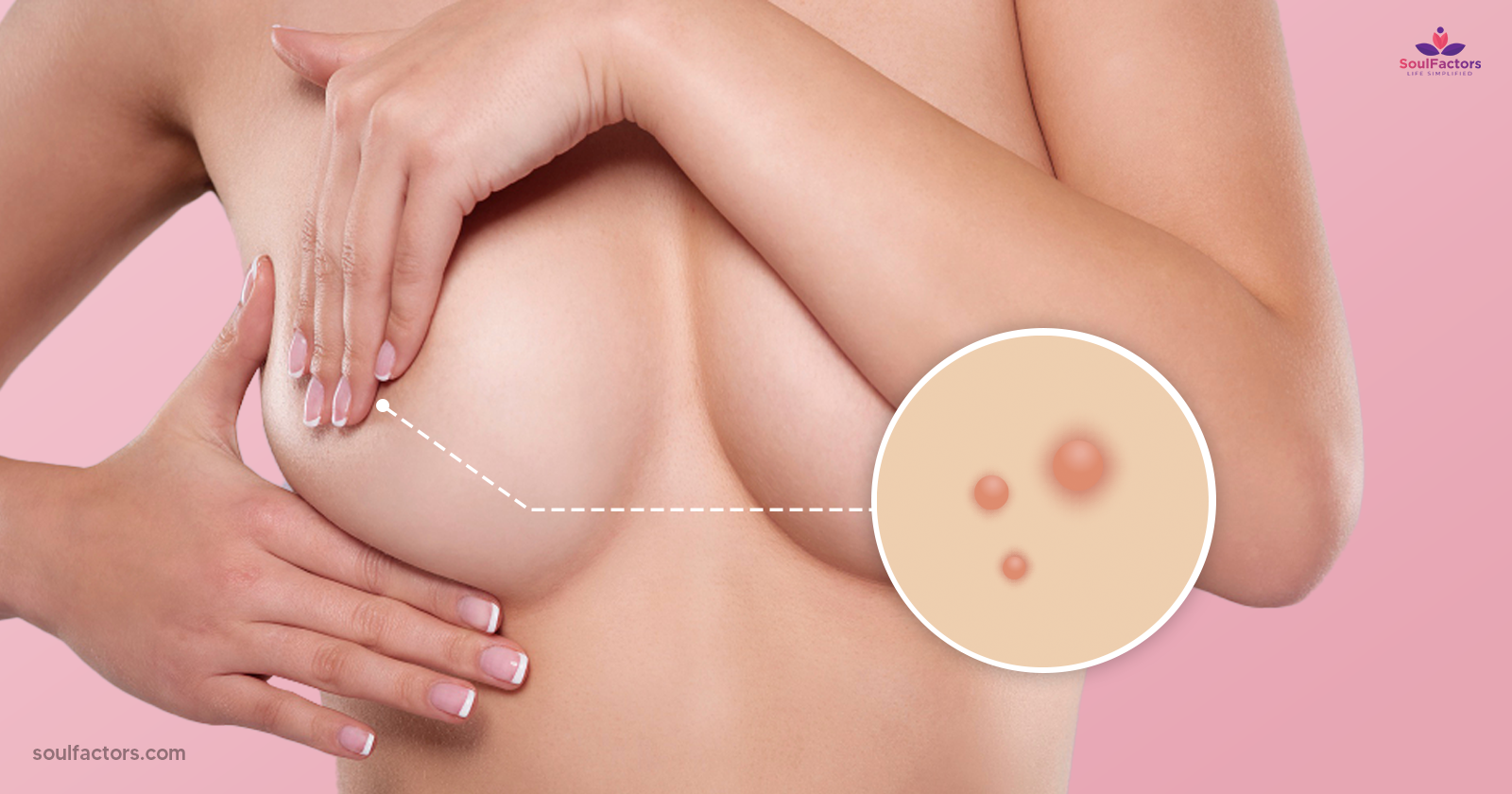
Among the various types of nipple issues known so far, pimples on nipples have remained highly predominant and concerning, given their appearance and likely impact on breast and nipple health.
While most of them present as benign and non-problematic, such as with small and painless bumps on the areola, also with bumps (raised patches of skin), or whiteheads (pimples) on the nipples, there are others that indicate underlying malignancy, especially for the symptoms they represent. It is, therefore, important to identify normal and benign-appearing pimples on nipples from those that denote serious problems.
Why Do I Have Pimples On My Nipples?
There is not a sure-shot answer that would explain why you see/get pimples on your nipples, areolae (1), or surrounding areas of your breasts. The causes are many, and these depend on the type (appearance and size) and nature of the pimples that you see on your breasts, nipples, and areola.
Apart from pimples, you may also witness things like acne, bumps, ingrown hairs, abscesses, or clogged glands on your breasts, including nipples and areola. If these do not cause you any persistent pain or other concerns, you can rest assured that nothing there is nothing to worry about.
Acne On Nipples
Acnes are a kind of pimple that forms on breasts, nipples, and areolae due to dirt, sweat, and bacteria getting trapped in their pores. With time, acne swells and turns into a whitehead. If you notice acne quite often in these areas, this suggests that you should keep your breasts and nipples clean on a routine basis.
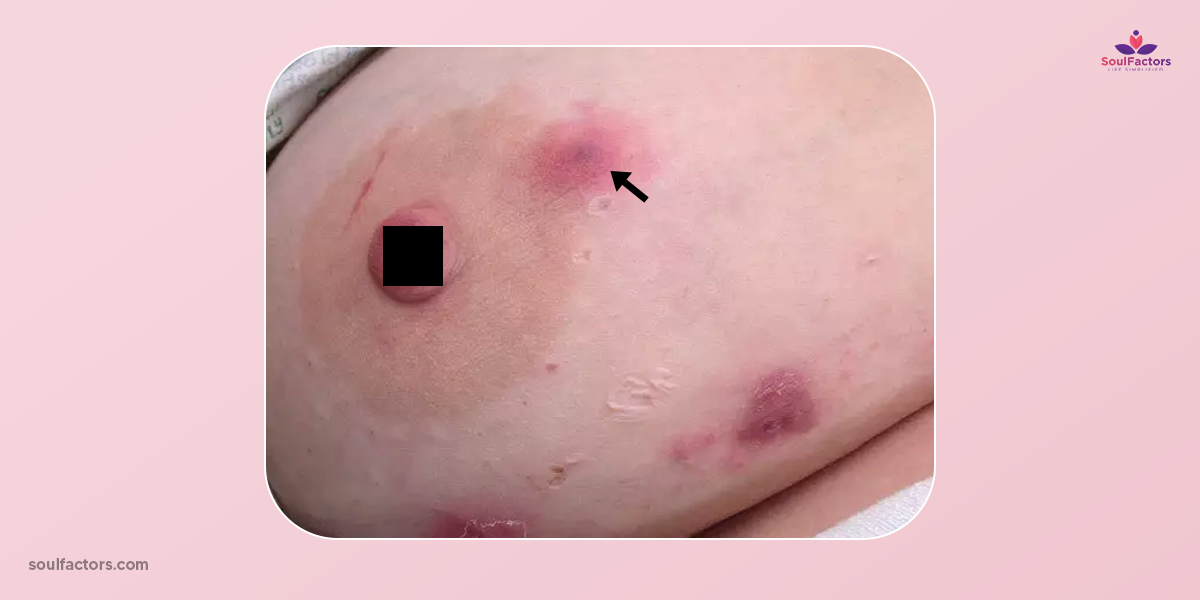
Bumps On Nipples Image
It is not a big deal for a healthy woman to develop bumps on the skin surface surrounding her nipples and areolas. Also known as Montgomery’s glands or Tubercles of Montgomery, these are the oily fluids-secreting sebaceous glands that assist in moisturizing the areolae and nipples (2), also keeping them protected from germs.
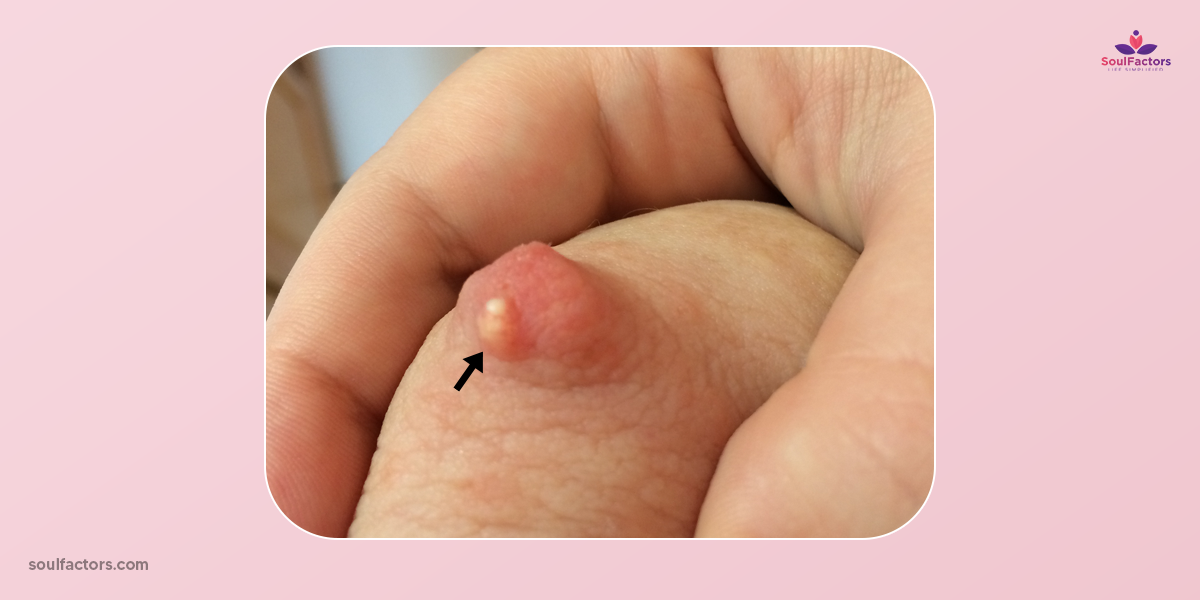
This fact is enough to assure all you women out there regarding the harmless nature of bumps occurring around your nipples and areola. If you are a breastfeeding mother, these bumps act as an olfactory stimulus for your baby to latch on. Hence again, nothing to worry about!
Ingrown Hairs on Nipples
Appearance of hairs around the nipples occur as a result of the hair present along the areolar edge. An ingrown hair is a strand that actually grows back into the skin. It tends to bring about tiny, swollen, and even painful bumps on the nipple skin.
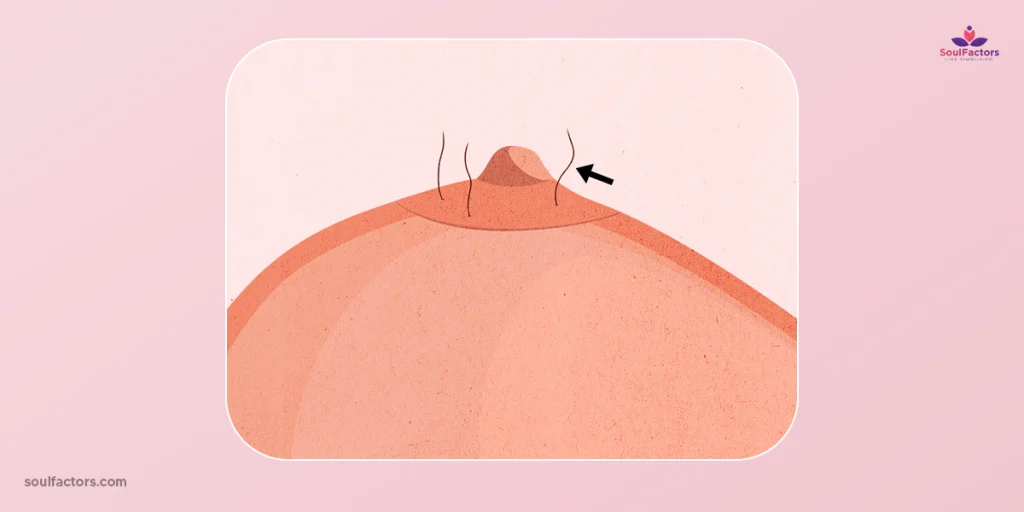
This condition, though not abnormal, is, however, likely to cause discomfort and appearance concern in some women in whom ingrown hairs appear more pronounced.
Though tweezing or plucking is possible ways to get rid of these hairs, this cannot provide permanent relief. One can also consider applying a warm compress or taking a hot shower. The otherwise normal appearance of nipple hair should invoke no actual concern in you. However, it advised that you identify any underlying hormonal imbalances, PCOS (polycystic ovarian syndrome), or Cushing’s syndrome that can likely cause hair growth around nipples.
Abscesses And Clogged Glands In And Around Nipples
I guess that some of you must have already noticed abscesses in and around your nipples and areolas. For your information, these are pus-filled sores mostly found below these areas of your breasts. Abscesses, like pimples or acne, form when bacteria enter the skin. Because the breast skin is soft (3), it is vulnerable to bacterial invasion. Thankfully, the strong immune system you possess helps you fight off these bacterial germs by prepping your white blood cells to fight against this infection.
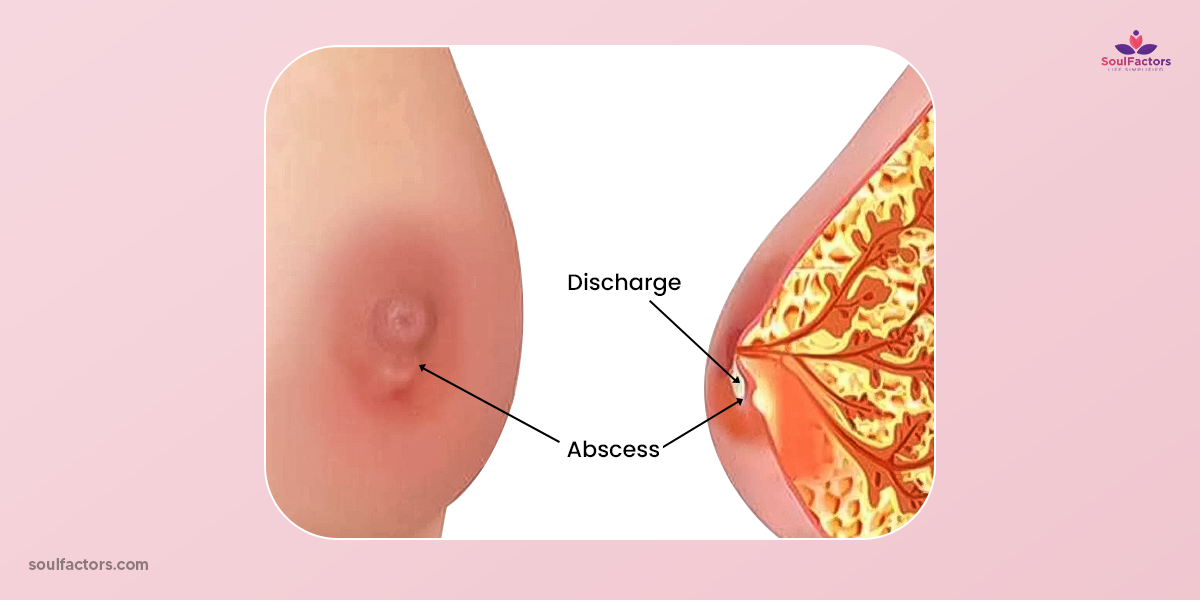
This statement is enough to suggest that abscesses, unlike pimples, are painful because of too much debris and the resultant pus pocket formed, consisting of degenerating white blood cells, dead or living bacteria, and debris of dead tissue. You are also likely to notice lumps in the pus pocket formed with drainage of the pus. These are accompanied by a general feeling of illness with symptoms similar to the flu.
The clogged glands on nipples and areola occur secondary to the untreated nipple/areola abscesses. The latter tend to create a mammary duct fistula, thereby clogging the milk duct. Therefore, if you are a lactating mother, it would be in your best interest to seek medical attention at the earliest. There is a high likelihood of your nipples becoming retracted. Moreover, the discomfort and pain that the subareolar nipple abscess presents with, may cause tenderness and swelling in the nearby areas of the breasts too. Especially, the armpits.
At a point, surgery becomes the only available option to drain the excess pus and debris out of the infectious site to prevent further occurrence of abscesses. For those breastfeeding mothers out there, they can rest assured that the chance of abscess formation is higher in non-lactating women. However, they cannot exclude the chances of developing breast infections.
Difference Between Pimples on Nipples and Other Nipple Conditions
In the previous section, it was mentioned the various manifestations of pimples that occur around nipples and areolae, such as acne, bumps, and more serious presentations in the painful lumps and abscesses. Apart from their appearances, the one other thing that struck me is truly the similarity to the distinct differences that some of them hold, especially because of their not-so-problematic and benign nature. For instance, acne (a form of pimple), bumps, and ingrown hair belong to this group.
Their specifications are what leave the lumps and abscesses behind. This is besides their large size, cause pain, tenderness, and swelling in the surrounding skin area as well. While the oil-filled sebaceous fluids help moisturize the nipples and areola, the lumps and abscesses are filled with germs and dead white blood cells. It can cause discomfort, irritation, and pain, signaling infection from bacterial invasion. This demands immediate pus drainage through surgical excision (if medically warranted).
Bumps on Nipples – Are They Normal?
Again, from the facts provided above, it is absolutely normal for women (and even men) to have bumps on their nipples. They comprise that oily fluid within, which if drained through the open pores, serves to lubricate both the nipples and the areolae. This also acts as a stimulus for the baby to feed on.
However, one must also note that all these forms of pimples, including acne and bumps present as different extents of bacterial invasion, except for the bumps caused by the ingrown hairs on nipples. This, if left unattended, can turn problematic for the breasts. This is particularly true in the case of acne, which tends to present as clusters of pimples in specific areas of the breasts, covering the nipple and areola.
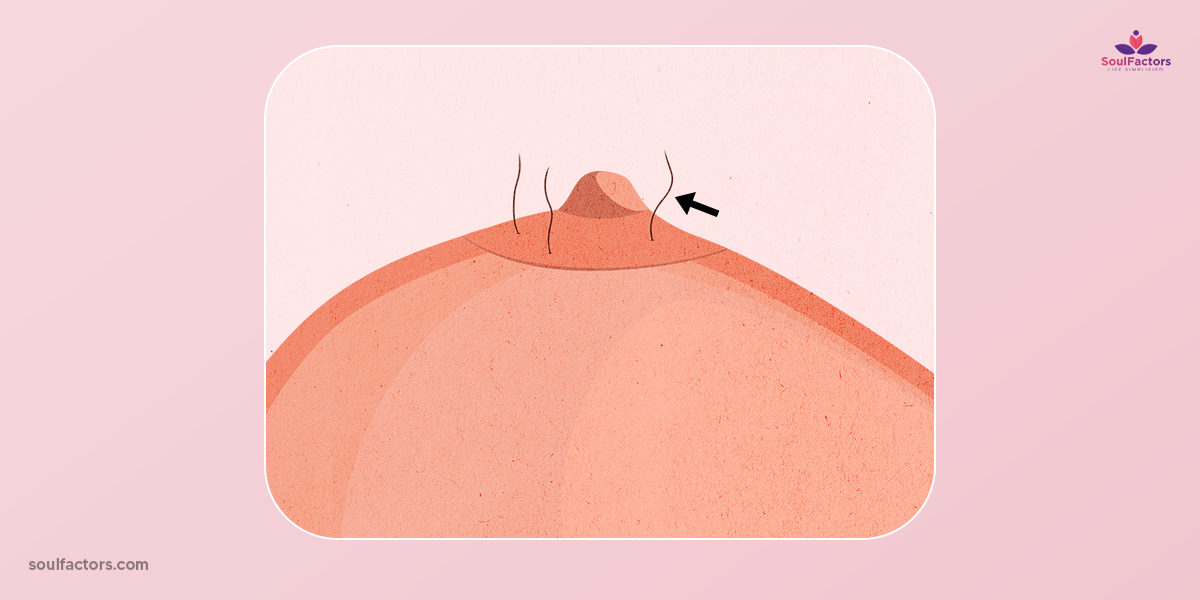
When to Seek Medical Attention
Having read all this, you must be wondering what kind of nipple bumps you should be truly worried about. Well, if this is the question that erupts in your mind, it would be worth telling you here that noting the difference between bumps and pimples will tell you if there is cause for concern. While a bump on the nipple suggests a raised patch of skin, a pimple appears as a whitehead. Unlike the latter, the former is likely to turn itchy and painful, also presenting with symptoms, such as redness, rash, and discharge. This is a clearl sign that it is time to seek medical attention.
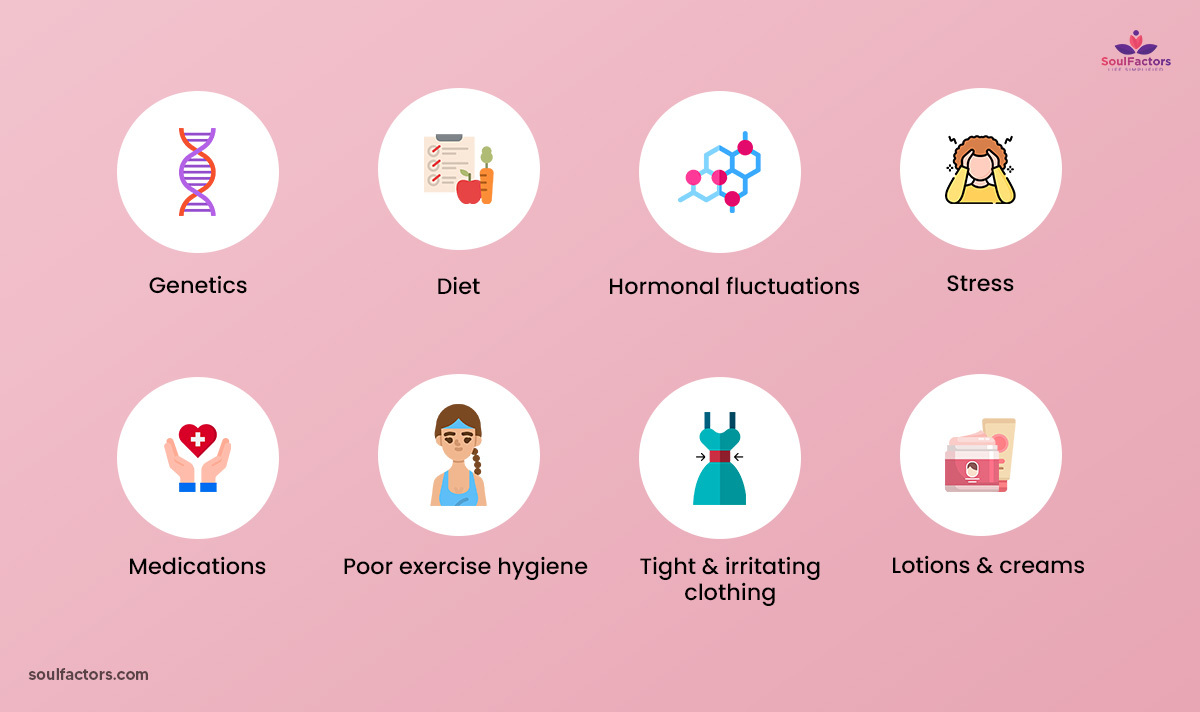
| Factors Affecting Pimples on the Nipple | |
| Factors | Causes |
| Genetics | Though not directly linked to acne, can definitely worsen the same. Overdriving glands to produce sebum, leading to pimple formation in excess. |
| Diet | Excessive or frequent intake of foods rich in refined carbohydrates, milk/dairy products, and trans and saturated fats increases the risk of developing acne. |
| Hormonal fluctuations | Fluctuating hormone levels can cause acne, especially at puberty. The first to be most affected by hormonal fluctuation is the skin, including that of the breasts and nipples. |
| Stress | Tight, irritating, and non-breathable clothes likely cause pimples. Wearing unwashed bras will make acne worse. |
| Medications | Medications in the category of corticosteroids, thyroid hormones, and some antibiotics are likely to cause acne. |
| Poor exercise hygiene | The sweat produced by poor exercise hygiene, such as not bathing after exercise, is a potential cause of developing acne all over the body, including breasts, nipples, and areolae. |
| Tight and irritating clothing | Tight, irritating, and non-breathable clothes likely cause pimples.Wearing unwashed bras will make acne worse. |
| Lotions and creams | Massaging breasts with poor-quality sunscreen lotion can increase the risk of acne production. |
Getting Rid of Pimples on Nipples
It is not strange that some among you are persistently worried about seeing pimples on your nipples and hence, must be thinking about ways to get rid of them. Isn’t that true? Well, referring to expert suggestions in this regard, I am here to provide you with a list of proven techniques that will help you to gain a permanent solution to this specific concern. The author emphasizes that the need to get rid of the pimples or bumps on your nipples depends on the factors that cause them and their rate of prevalence.
Treatment Options
- While acne and bumps on nipples and surrounding areas (areolae) can be left alone to disappear on their own, the frequency at which they present again and again does warrant a doctor’s intervention to treat the same to prevent further spread or occurrence by prescribing antibiotics in low doses, preferably doxycycline (Vibramycin and Adoxa).
- If you have acute or sudden pain due to nipple bumps/pimples, it is certain that yeast is the culprit there. In that case, we advise you get this treated with topical antifungal creams. The oral thrush in babies when feeding is the likely cause of this painful bump. If so, this will equally require treating babies for oral thrush.
- Treating subareolar abscesses is done by draining out the infectious tissue and prescribing antibiotics to prevent further recurrence. In the worst case, such as persistent recurrence, need to consider surgical removal.
- There are certain lumps that may not vanish even after draining dead tissue or surgical excision of the same. In such a scenario, a mammogram and biopsy will be recommended by your physician to rule out cancer. Chemotherapy, radiation, surgical removal of the tumor, and mastectomy are the suggested options of treatment for the same.
Self-Care And Home Remedies For Treating Nipple Pimples
Self-care and home remedies can also be considered in line with the measures adopted above to treat nipple pimples. Nevertheless, these also depend on specific factors causing pimples on nipples, including genetics, diet, stress, hormonal fluctuations, medications, poor exercise hygiene, tight-cum-irritated clothing, and out-of-brand sunscreen lotions (Fletcher, 2018). If you women out there can keep note of the above-mentioned factors when considering home remedies to prevent, then can surely take this step to permanently get rid of pimples and acne,
Medications:
When specifically talking about medications, these should be adjusted per physician’s advice. As it is true that some of you may be on hormonal supplements, including thyroids and corticosteroids, these cannot be avoided.
Pimples On Nipples During Pregnancy And Breastfeeding
The pimples and bumps, also termed the Montgomery Tubercles, are generally harmless and are present occurring during pregnancy and breastfeeding. They can also be seen throughout the menstrual cycle and do not hurt the breasts. It is, therefore, rare for these kinds of bumps to cause any pain as well. However, a physician’s consultation is necessary if that happens.
Since it is normal for women to develop these Montgomery Tubercles on their nipples, it is likely that these do have a vital role in lactation and breast lubrication. As was previously stated, they also help protect the breasts and nipples from germs. An estimated 9% of women possess Montgomery Tubercles, though their size varies for each. The harmless nature of lumps like these truly indicates their importance in breastfeeding and improving lactation.
Preventing Pimples On Nipples
Though most the pimples and acne are considered to be harmless and quite normal to the nipples and areolas, there are some that may cause extreme pain with swelling and tenderness in the nearby skin areas. It is, therefore, reasonable to avoid or get rid of such. Warm compresses, wet soaking and massaging in slightly hot water can help alleviate the pain, as well as soften the pimples.
Wearing clean and washed bras, avoiding tight-fitting clothing, and limiting foods rich in refined carbohydrates can help prevent the occurrence of harmful and painful pimples on your nipples. After all, one should understand that the efforts made in this regard should take into consideration the various factors that aggravate the occurrence of pimples, acne, or bumps.
Conclusion
It is normal for pimples, such as bumps to develop on nipples and areolar areas of the breasts because most of them protect them from germs. However, not every version of pimple has this capacity like the Montgomery tubercles stated above.
While these help lubricate the nipples and areola, these also play a significant role in improving lactation in a breastfeeding mother. Women should, therefore, stay away from those pimples that are highly harmful to breast health, such as lumps and subareolar abscesses, for which other than surgical excision, no other treatment option would be effective.

Subscribe to Newsletter
Elevate your routine, stay on trend, and embrace a personalized beauty journey with our curated insights.



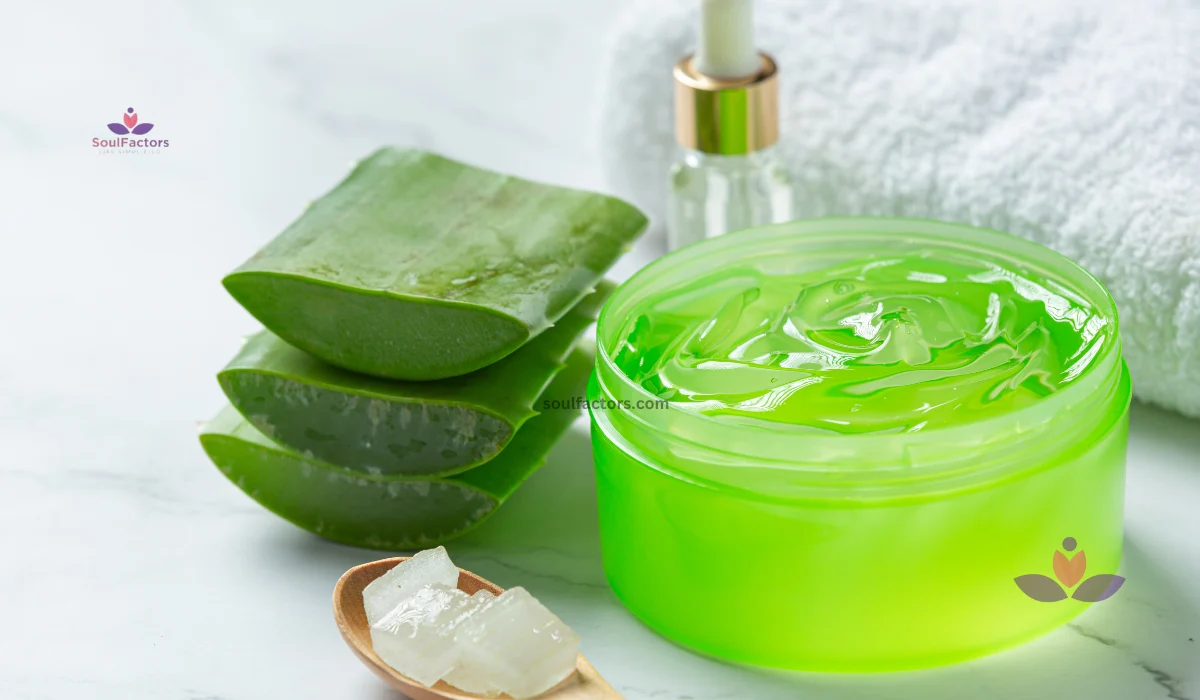
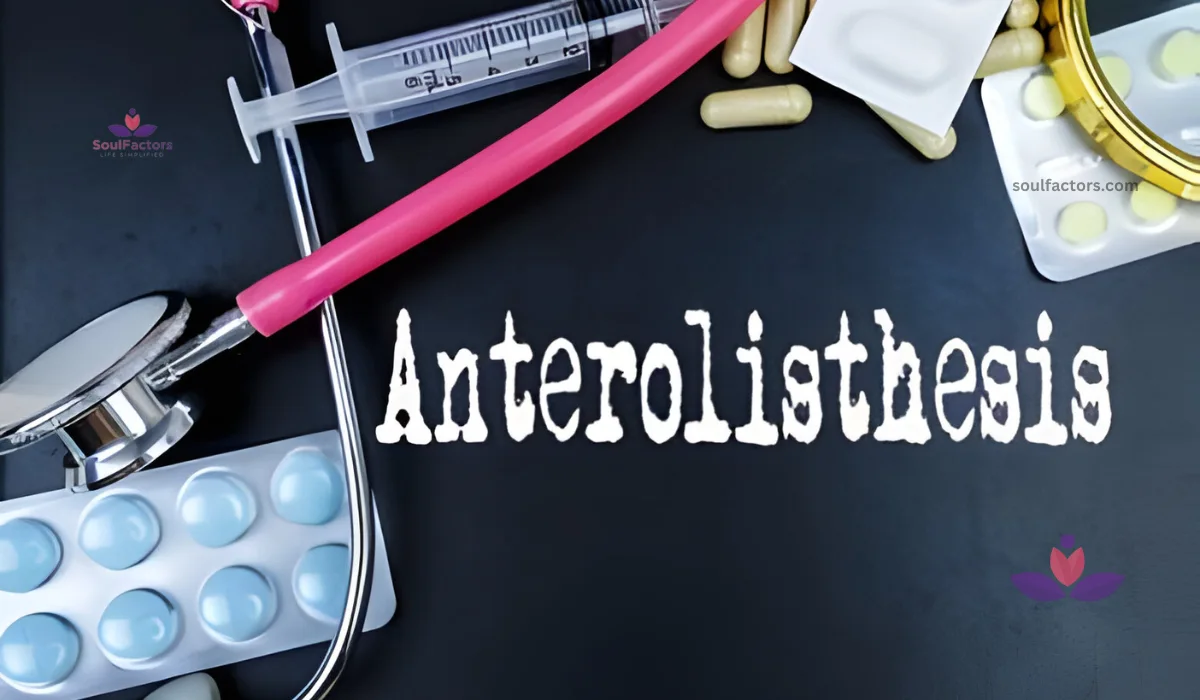
Write a Comment